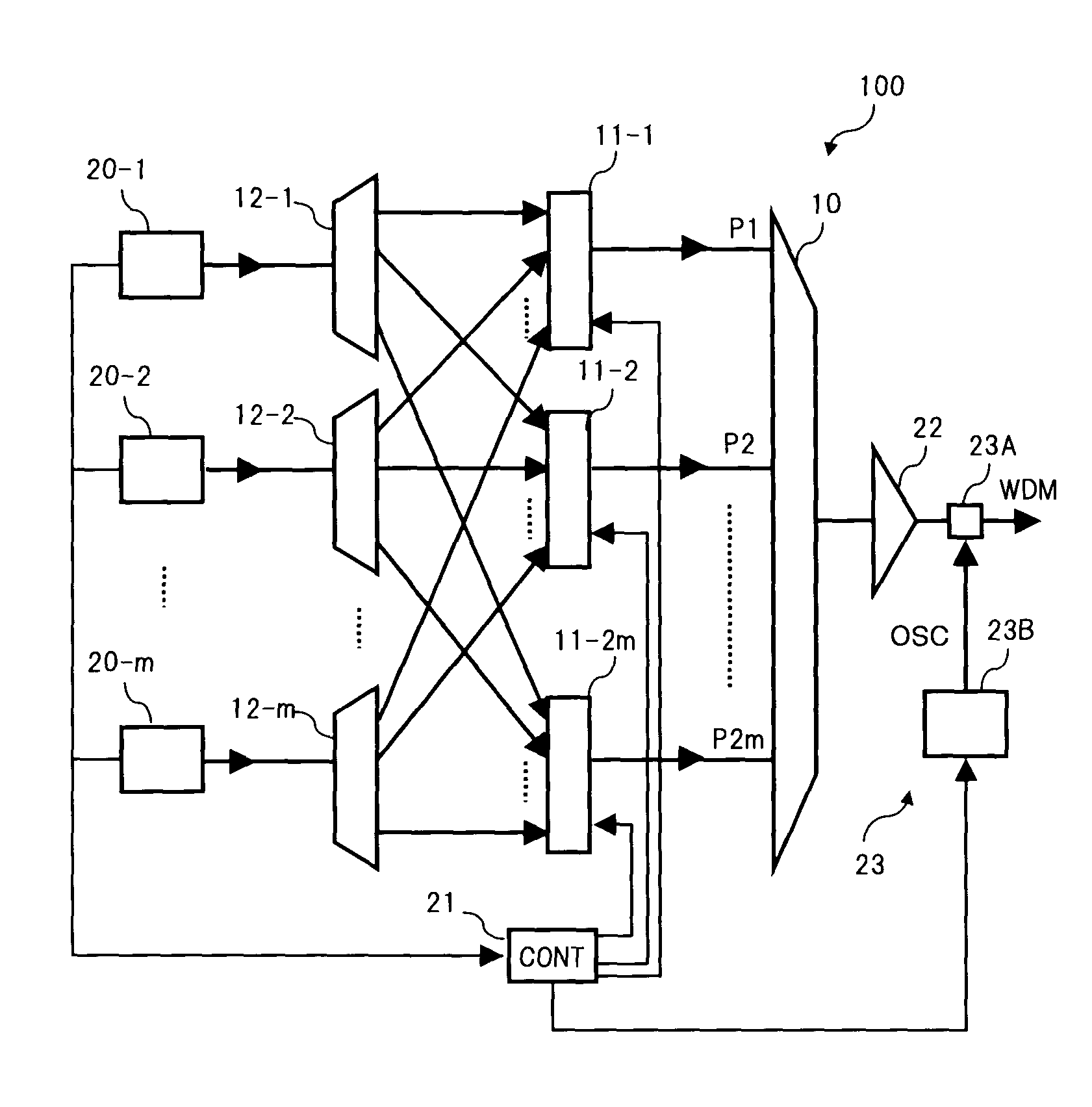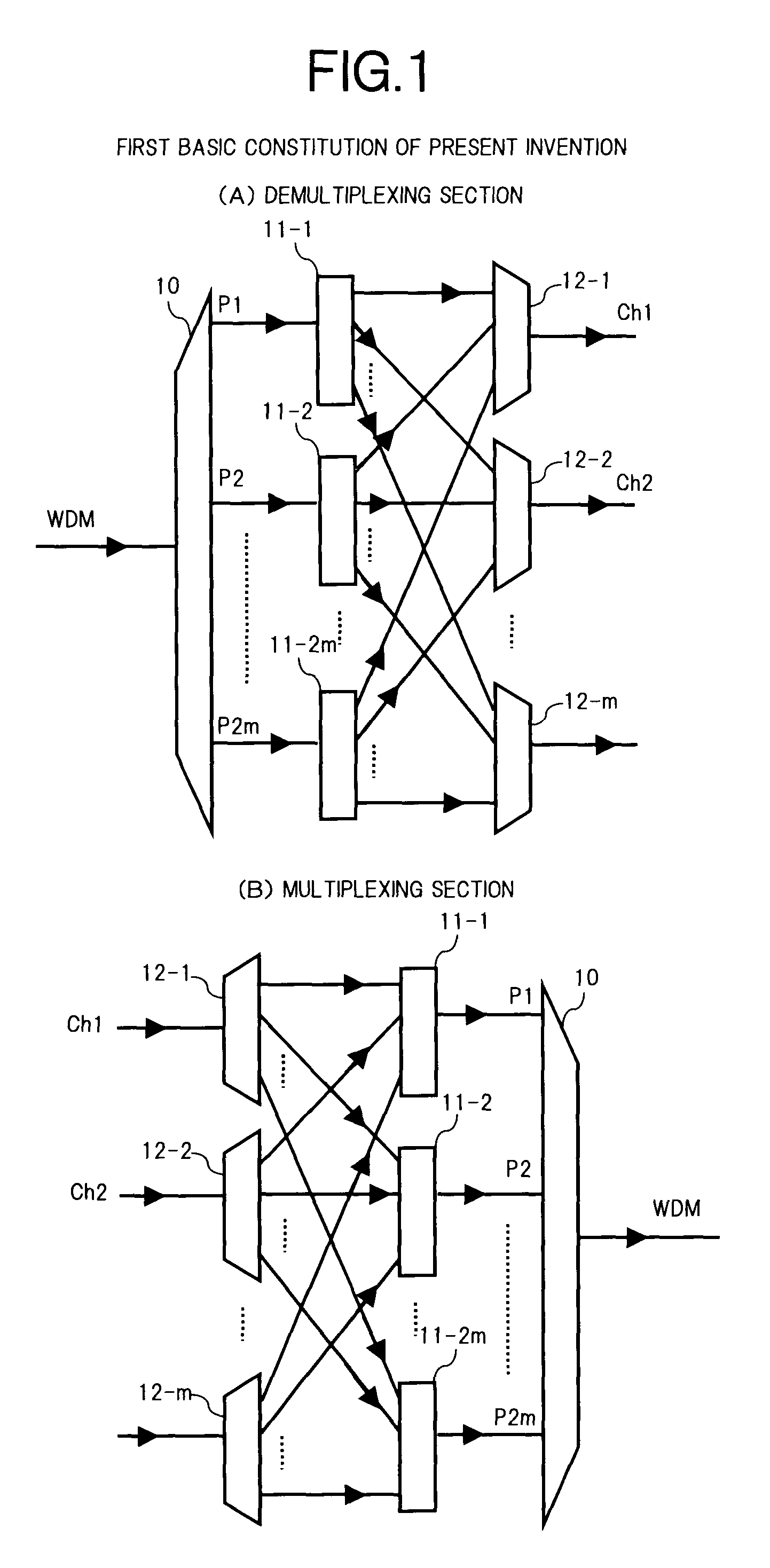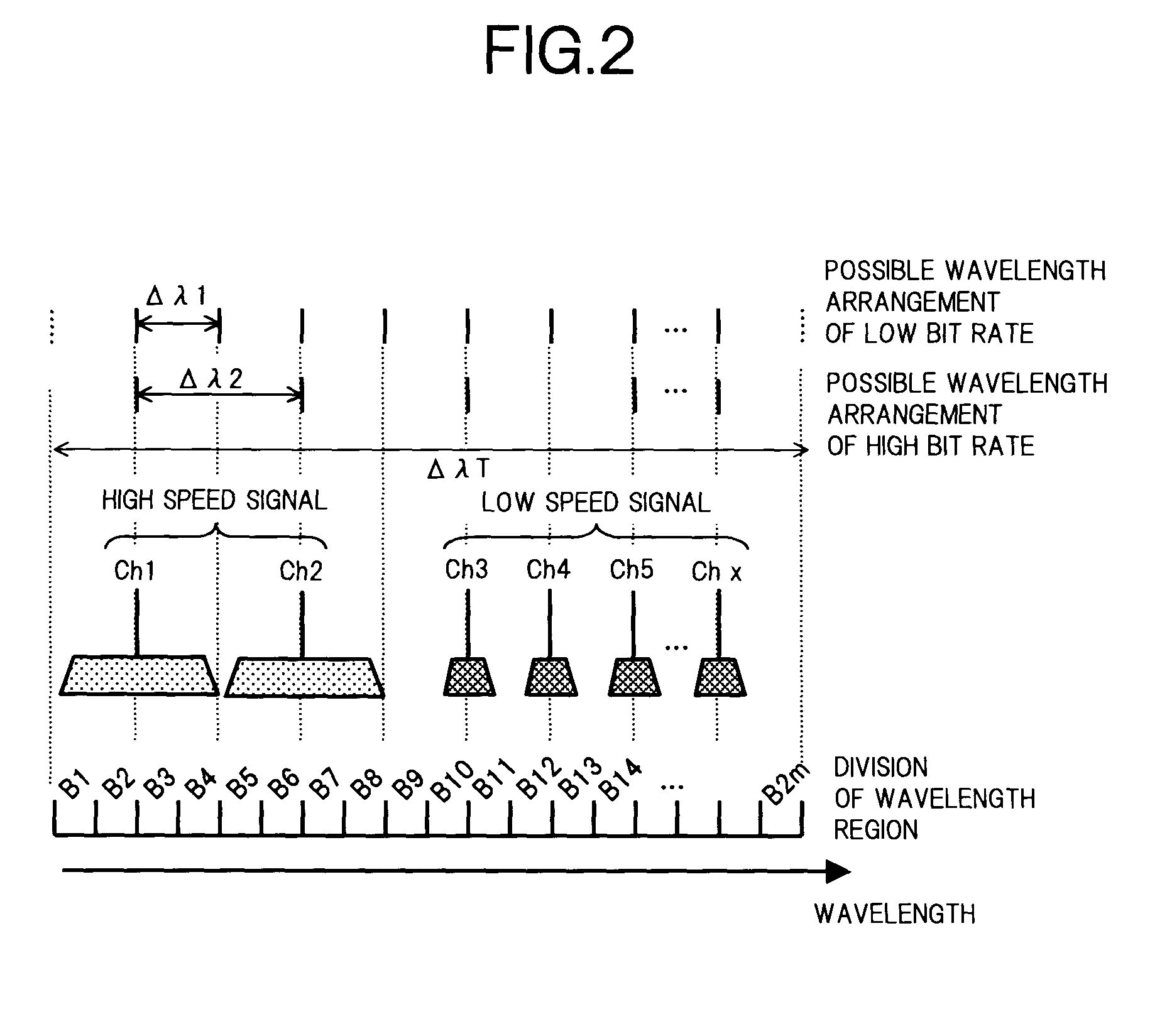Wavelength division multiplexing optical communication system
- Summary
- Abstract
- Description
- Claims
- Application Information
AI Technical Summary
Benefits of technology
Problems solved by technology
Method used
Image
Examples
Embodiment Construction
[0034]Firstly, a basic constitution of the present invention will be described using drawings.
[0035]FIG. 1 is a block diagram showing a first basic constitution of the present invention, to be applied to a WDM optical communication system, in which (A) is a constitution of a demultiplexing section that demultiplexes WDM signal light into respective wavelengths, and (B) is a constitution of a multiplexing section that multiplexes optical signals with respective wavelengths. Furthermore, FIG. 2 shows an example of an assignment of wavelength regions corresponding to the basic constitution of FIG. 1. Note, in the following description, the constitution of the demultiplexing section will be described. Since the constitution of the multiplexing section can be considered similarly by reversing an input and output relationship in the demultiplexing section, corresponding parts are denoted by the same symbols and the description thereof is omitted.
[0036]In (A) of FIG. 1, the demultiplexing ...
PUM
 Login to View More
Login to View More Abstract
Description
Claims
Application Information
 Login to View More
Login to View More - R&D
- Intellectual Property
- Life Sciences
- Materials
- Tech Scout
- Unparalleled Data Quality
- Higher Quality Content
- 60% Fewer Hallucinations
Browse by: Latest US Patents, China's latest patents, Technical Efficacy Thesaurus, Application Domain, Technology Topic, Popular Technical Reports.
© 2025 PatSnap. All rights reserved.Legal|Privacy policy|Modern Slavery Act Transparency Statement|Sitemap|About US| Contact US: help@patsnap.com



